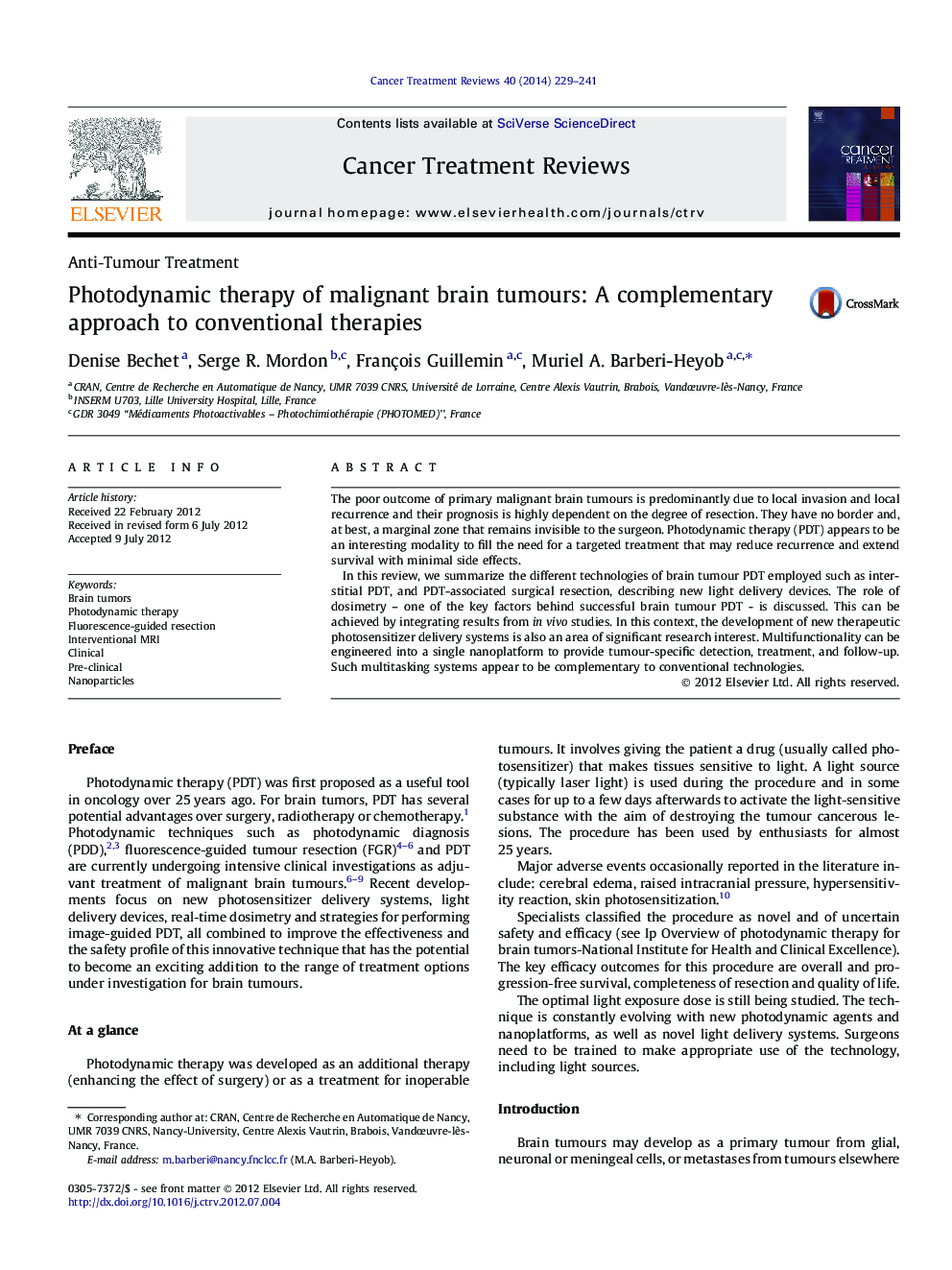| Article ID | Journal | Published Year | Pages | File Type |
|---|---|---|---|---|
| 6190574 | Cancer Treatment Reviews | 2014 | 13 Pages |
The poor outcome of primary malignant brain tumours is predominantly due to local invasion and local recurrence and their prognosis is highly dependent on the degree of resection. They have no border and, at best, a marginal zone that remains invisible to the surgeon. Photodynamic therapy (PDT) appears to be an interesting modality to fill the need for a targeted treatment that may reduce recurrence and extend survival with minimal side effects.In this review, we summarize the different technologies of brain tumour PDT employed such as interstitial PDT, and PDT-associated surgical resection, describing new light delivery devices. The role of dosimetry - one of the key factors behind successful brain tumour PDT - is discussed. This can be achieved by integrating results from in vivo studies. In this context, the development of new therapeutic photosensitizer delivery systems is also an area of significant research interest. Multifunctionality can be engineered into a single nanoplatform to provide tumour-specific detection, treatment, and follow-up. Such multitasking systems appear to be complementary to conventional technologies.
